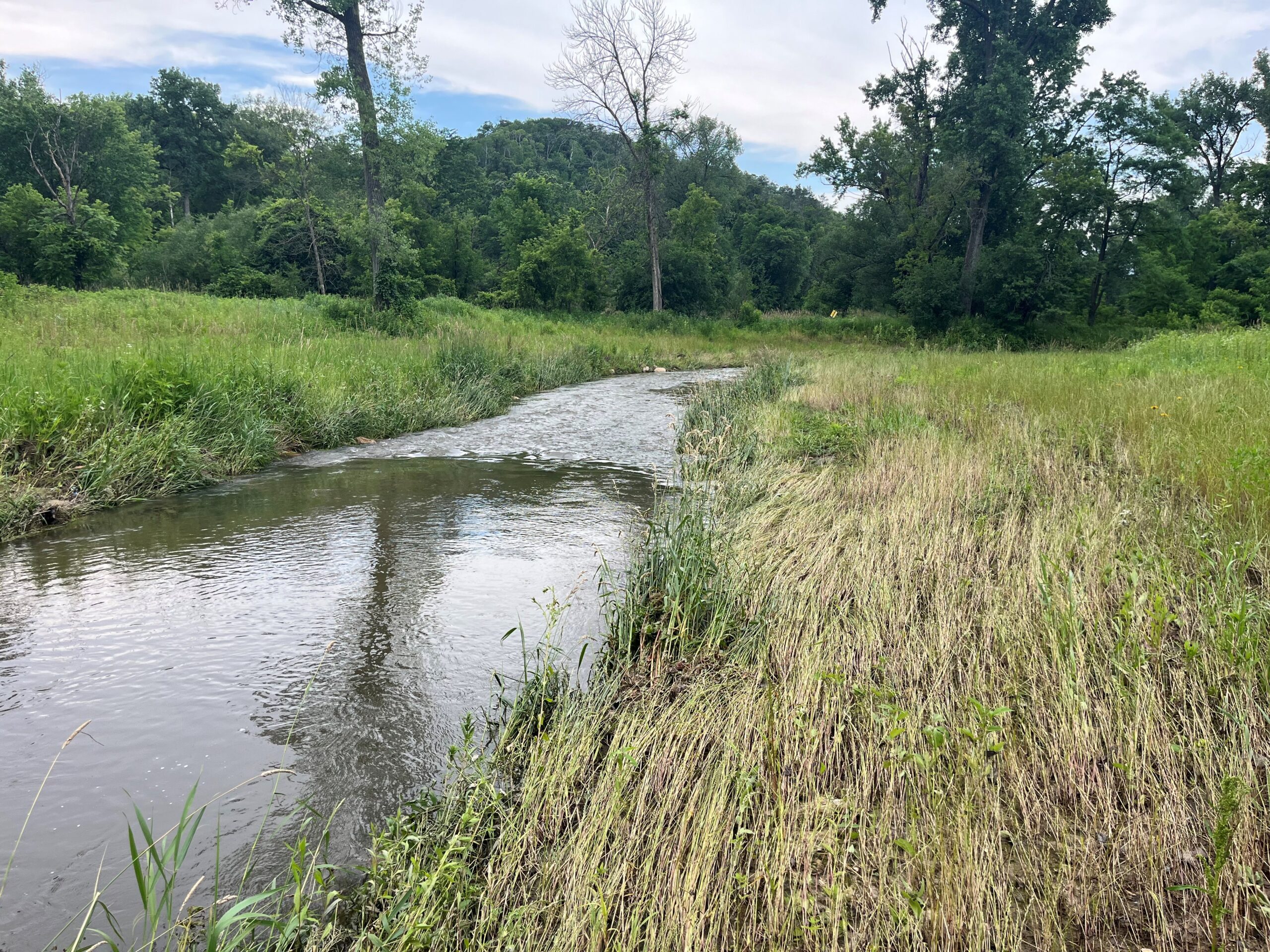Resiliency in Real Time – How MNTU’s Habitat Program is Strengthening Trout Streams Against the Impacts of Climate Change
By Dr. Jennifer Biederman
Recent flooding across Minnesota has starkly highlighted the growing impact of climate change on Minnesota. Torrential rains and swollen rivers have wreaked havoc on communities and ecosystems, highlighting the urgent need for adaptive measures. Among the most affected are our trout streams, whose delicate habitats are increasingly at risk from climate change – through rising water temperatures and an increase in heavy rainfall events.
Leading the charge in stream restoration efforts across the state, Minnesota Trout Unlimited’s (MNTU) habitat program is already making a difference in mitigating the impacts. Our recent habitat work, funded by the Lessard Sams Outdoor Heritage Fund, is boosting climate resiliency of coldwater habitat in real time across Minnesota in the face of rising water temperatures and heavy rainfall events. The above featured photo from Hay Creek in the State Forest illustrates how the June flood waters spread out. You can see the flattened grass. The energy release of floodplain prevented any damage to the instream habitat.
Rising water temperatures
How it impacts streams
Trout thrive in cold water. Rising air temperatures can increase water temperatures, particularly in the northeast region of the state where there is very little groundwater to provide thermal buffering. Elevated water temperatures create stressful conditions for trout in several ways: reduction in dissolved oxygen levels that are simultaneous with a higher physiological demand for oxygen, increased metabolic rates which increases food demand while slowing growth rate, altered behavior – trout will spend time and energy seeking cold water refugia at the expense of feeding, and increased competition with cool water species of fish.
How MNTU’s projects help
Part of MNTU’s stream habitat work in the northeast addresses rising water temperatures in a few important ways:
- identifying and replacing structures, like perched, undersized culverts, that block trout from accessing cold reaches of streams during critical periods of the year;
- Establishing riparian trees and native riparian vegetation to provide shade and enhance groundwater recharge;
- Restoring instream habitat, including deep pools that provide cooler temperatures and rocky riffles and overhanging vegetation to increase aquatic and terrestrial macroinvertebrate production providing a food supply for trout;
- Reconnecting access of water to the floodplain during high flow events, which helps recharge and boost cold groundwater inputs to the stream.
Increased heavy rainfall events
How it impacts trout streams
The risk that flooding poses to an already degraded trout stream is probably no secret to most anglers and stream enthusiasts. Flooding can worsen bank erosion, scour streambeds of food and deposit sediment over spawning beds. Increased sediment load can also increase water temperatures, smother eggs (redds), and cause physiological stress on juvenile and adult trout. In agricultural areas of southeastern Minnesota, flood waters can carry pollutants, organic matter, and nutrients into the stream, degrading water quality, reducing aquatic macroinvertebrate communities, and causing fish kills.
How MNTU’s projects help
Effective stream restoration projects prioritize reconnecting the stream with its floodplain, allowing the destructive energy of flood flows to dissipate across the landscape. Making sure flood water can access the floodplain also protects stream habitat, including spawning beds and aquatic macroinvertebrate communities, and preventing temporary and long-term water quality degradation.
A key priority of our projects is establishing native, perennial vegetation within the riparian corridor – typically a 132-foot width easement. Deeply rooted vegetation stabilizes and protects stream banks from erosion, reduces sediment entry into the stream, dissipates the energy of floodwater both within the channel and surrounding areas on the landscape. Additionally, slowing the spread of flood water across the floodplain allows for increased infiltration of water to recharge groundwater springs, which provide thermal buffering and sustain healthy base flows.
Heavy rain and widespread flooding plagued both the northeast and southeast regions of the state this spring – where the many MNTU projects have been completed. Both DNR and MNTU staff, and our chapter members, have been impressed by the resilience of recent MNTU projects, including culvert replacements and stream habitat improvement projects, in withstanding historic flood events while helping mitigate flood damage to the surrounding watershed. As we march forward in our efforts to protect and restore coldwater habitat across the state, we will continue to do so with climate change in mind.

